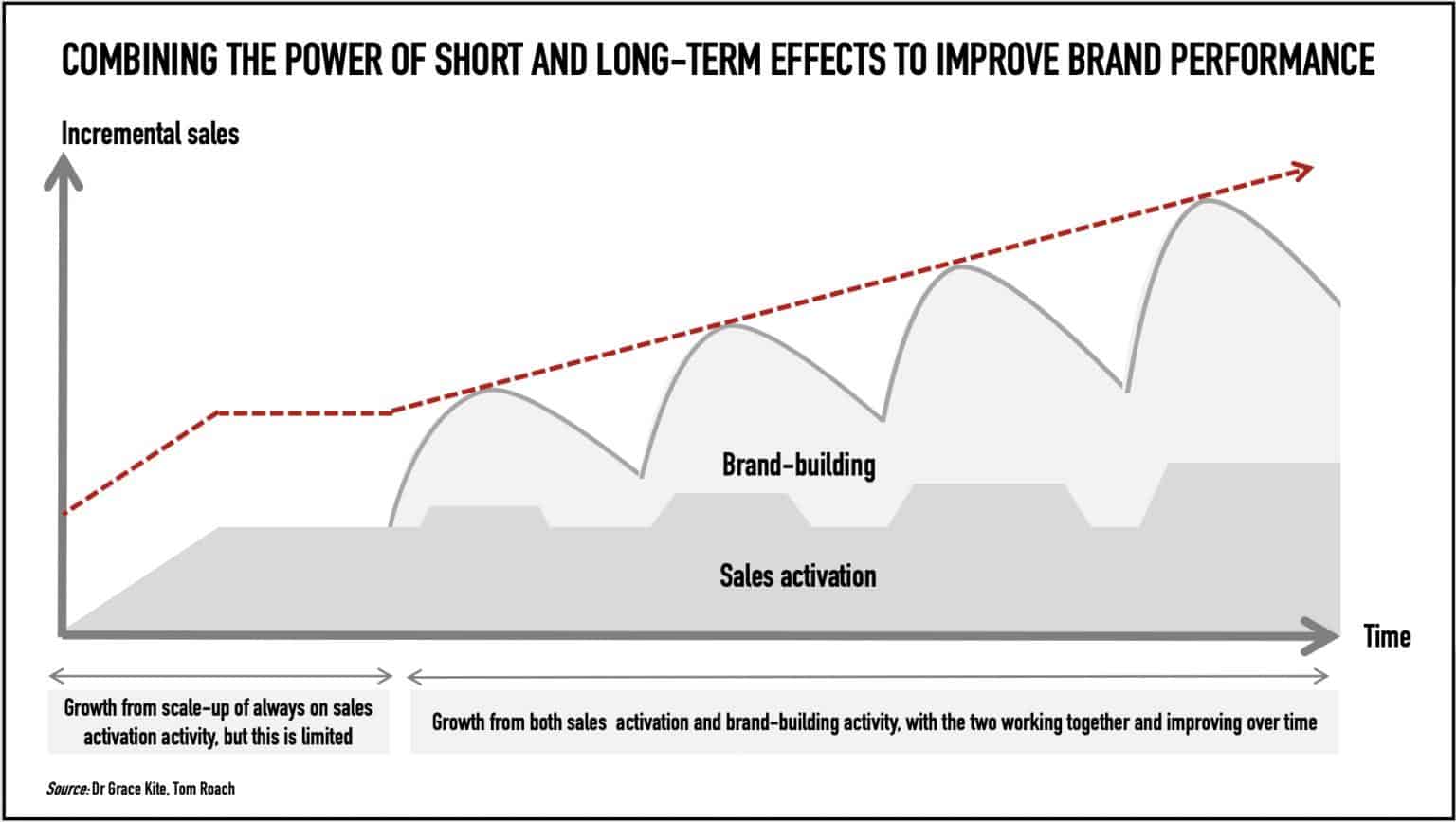
Working in B2B marketing, and especially with technology and software organisations, the usual client marketing brief is ‘we want leads’.
Our job at Cremarc is to encourage forward-thinking marketing that goes beyond lead generation, and looks at the bigger picture. How can we increase the number of inbound enquiries rather than focusing all our efforts on pulling in leads from sales activation activity? Effectively, how can we turn a business into a brand?
Now we’re entering a recession, organisations should be focusing on brand building to win a larger MSoV (Market share of voice) from their competitors that will inevitably be cutting back on their marketing spend. This is an opportunity to shift from 90% lead generation and 10% brand building to a fairer split between generating leads and building a known brand with high demand.
What is lead generation?
Lead generation is where an organisation focuses marketing budget on acquiring individual prospective customer details, whether that be through a form fill on some valuable gated content, via a sign-up to a newsletter, or even a simple request for more information on their products and services.
What is demand generation?
Demand generation is where an organisation focuses marketing efforts and budget on building brand awareness and widespread interest in their products or services. This strategy is usually only adopted by larger organisations who have excess marketing budget, but really, it should make up close to 50% of any organisation’s marketing spend.
What’s the best strategy in 2023?
With the crumble of Google cookies, customer journeys will be even trickier to map. Gone are the days of manually pushing users down a pre-defined funnel. It doesn’t work like that anymore. Marketers should be focusing on reach, engagement, and brand positioning. Look to the future and don’t neglect any level of the funnel!
Let’s strip business back to the essential 4 Ps. Product, place, price, promotion.
If your product is an existing seller and doesn’t appear to be slowing down, you’ve nailed the first one. If you are going-to-market now, I’d hope that you’ve done your research and that you’ve nailed that one also. Either way, never rule out product adaptations. Product is key, as are all the 4 Ps, but the product itself isn’t what you need to focus on with demand or lead generation – your focus should be how you position it.
Your place (location) is key but that’s just about availability and accessibility. If you have a well-optimised website or store location, you’ve nailed that P too.
Price and promotion are the key Ps that you need to leverage in demand generation.
You need to think how you position your product or service, the environment that frames it, and the details of price and specification that give you either a competitive edge or additional perceived value.
Building demand with strong branding
This is where B2B brands can take a page out of the B2C marketing book. Take fashion brand Supreme for example. They charge extortionate rates and offer limited availability. They make prospective customers queue for up to 8 hours to purchase a single item of clothing. They invest in their brand and create demand. This is such a great example of demand generation and gamification being used in synergy. Supreme build hype and demand through brand building activity, and then lay out some perfectly symmetrical, colourful and fluffy metaphorical hoops for customers to jump through.
Most B2B organisations focus on lead generation. They want to receive engaged individuals who are interested in buying their product, directly from their marketing activity, so that their sales team can reach out and close the deal. But that’s not the way of the world anymore.
All of us have bought or regularly buy software or products on behalf of our businesses. Now think back to the last time you invested in a tool, program, or new tech product. Do you think you saw an advert for it, clicked on the advert and purchased it? Or had you already heard of the brand through strong positioning campaigns, know the quality of the product, and jump through some internal procurement and purchasing discussions before purchasing it?
Business decisions are so much more complex than many marketers map out in their general funnels.
Think long-term
I’ll coin a new marketing buzzword now:
Recessive branding – re-sess-iv bran-ding
The act of building a brand and demand for a product or service over a long time period with the expectation of it staying memorable through consistent brand building activity and being top of mind when prospective customers are ready to purchase.
The word ‘recessive’ being taken from genetics, in this case, implies that the brand stays memorable but not consciously. I am suggesting that a strong brand captures attention, and then doesn’t need to be thought about 100% of the time until the purchase is made. It just needs to be top-of-mind when it matters.
B2C organisations invest heavily in their brand so that when you’re online shopping or walking through the supermarket, you see the brand when you’re ready to make that purchase.
The B2B equivalent would be for a toothpaste-salesmen to be positioned in the fruit and vegetable aisle hassling you because you looked at a toothbrush three weeks before. You’re not in the right mind to buy that product, you’re not in the right setting to buy the product, and you may not even be interested.
However, if the toothpaste brand played the long-term game of recessive branding and waited until you got to the toothpaste and hygiene aisle before displaying their product, they’d probably be top-of-mind (if they’d done their demand generation job right) and they’re likely to secure a sale.
Essentially, B2B marketers need to start splitting their marketing budget between lead generation and demand generation more fairly. Leads are always a great way to get an instant foot-in-the-door but be mindful about business decision-making processes. Look to the future and think long-term. Invest in your brand and you’ll see the results.
Just like the famous study by Les Binet and Peter Field, ‘The Long and the Short of it’, in which they talk about how the symbiosis between long-term and short-term cultivates improved results.

There will always be a place for both lead generation and demand generation. The key is to let them work in harmony.
Our COO, Matt Berry spoke similarly about the relationship lead gen and brand have, in his blog “Brand building: The growth strategy for tech companies big and small“.